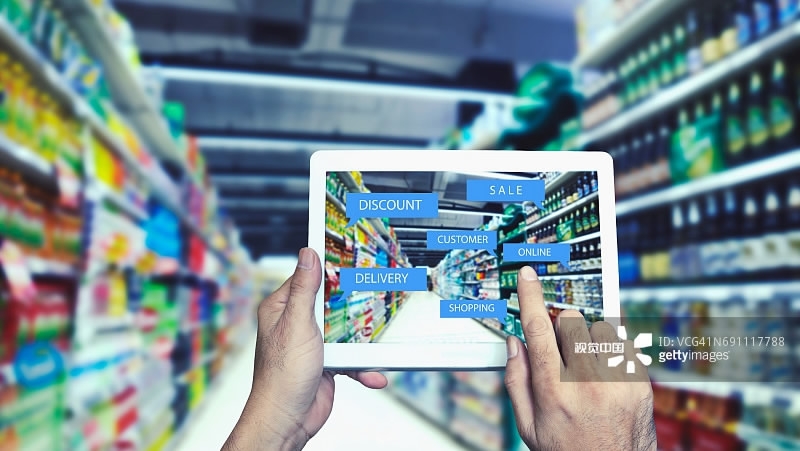
Business
15:06, 20-Feb-2018
Great scope for e-commerce growth seen in Latin America
By Bertram Niles

To the casual eye, e-commerce in Latin America and the Caribbean is doing rather well.
The payments company Worldpay estimates that the global market will grow at an average of 11 percent over the next five years, with Latin America leading the way at 19 percent, though some individual nations are already well above that.
The projected rise of transactions would move from about 60 billion US dollars in 2017 to 118 billion dollars or so in 2021.
Latin America also has the highest percentage of online consumers that make purchases exclusively abroad – 15 percent, compared to 4 percent in Asia.
But those figures don't tell the whole story.

Latin America is regarded as a a very promising market for e-commerce. /VCG photo
Latin America is regarded as a a very promising market for e-commerce. /VCG photo
According to the Inter-American Development Bank (IDB), the average number of annual online transactions per capita in Latin America was actually the lowest worldwide in 2016, with only 9.2 annual online transactions, compared to 22.1 in Asia.
The bank said Latin America’s participation in e-commerce remains marginal, despite the substantial increases in growth in recent years.
Business to consumer (B2C) spending controlled by the region is about two percent, which is lower than its participation in global GDP (7 percent) and in international merchandise (6 percent). It is also substantially below the 40 percent share of global B2C spending controlled by Asia.
Why is this? Trade consultant Barbara Ramos blames long-standing barriers to trade and emerging constraints that are specific to doing business online.
Among the constraints are the low quality and high cost of internet services in Latin America as a whole, the limited availability of international electronic payment options, and the monetary and time costs imposed by transportation and customs procedures on high-volume and low-value items.

Credit card usage in Latin America is relatively low. /VCG photo
Credit card usage in Latin America is relatively low. /VCG photo
"In addition, the absence or heterogeneity of regulations does not give producers and consumers the necessary instruments, guarantees, and protection to engage in cross-border transactions, and puts LAC (Latin America and the Caribbean) at a disadvantage compared to regions where greater legal harmonization has been achieved," Ramos said.
Marketing professional Jason Harvey Logistics also points to logistics challenges as a historic obstacle.
"While logistics companies like FedEx, UPS, and DHL operate in the region and are improving deliveries of parcels, they continue to charge high rates," he said. "Often, these higher delivery prices on even lower-priced items hampers sales growth."
Some newcomers have, however, been entering the market, and offering competitive rates.
Of note also is that the e-commerce business in Latin America remains rather lopsided, with Brazil, Mexico and Argentina accounting for close to 70 percent of all transactions by value. Colombia and Ecuador have, however, been seeing the fastest growth.
Worldpay singled out Argentina as an important case study in a release last October.

Latin America has a long way to got to catch up with China in per capita use of mobile phones in e-commerce. /VCG photo
Latin America has a long way to got to catch up with China in per capita use of mobile phones in e-commerce. /VCG photo
It said: "In spite of a difficult economic history in recent years, Argentina benefits from an internet penetration rate of over 80 percent, and the largest proportion of mobile internet users of all Latin American countries. The country is now on track to become an e-commerce powerhouse, on par with Brazil as early as 2024."
A lot of the business in the region is cross-border.
The IDB says Latin America has the highest percentage of online consumers that make purchases exclusively abroad – 15 percent, compared to 4 percent in Asia.
"However, while consumers are buying abroad, Latin American sellers are not taking as much advantage of international e-commerce markets, as gathered from the region’s falling share and lower rate of growth of international parcel dispatches," the bank said.
Reliable internet coverage is, of course, necessary for e-commerce to flourish. Even though the average number of mobile broadband subscriptions per 100 inhabitants increased from 5.6 in 2011 to 59.1 in Latin America in 2016, the IDB says there is still wide variation among countries.

E-commerce market size breakdown for Latin America/Caribbean. (CAGR -- compound annual growth rate). /dhl.com
E-commerce market size breakdown for Latin America/Caribbean. (CAGR -- compound annual growth rate). /dhl.com
That was lower than the average for OECD countries, at 87.1 lines per 100 inhabitants, while the average speed was 2.05 Mbps, compared to 22.02 Mbps for OECD countries.
Additionally, credit card use in the region is still low. For example, credit card payment penetration in Brazil in 2017 was put by the World Bank at 30 percent. Debit cards are often not enabled for online purchases.
So, clearly there is a lot of untapped potential in a very promising market for both local merchants and international e-tailers in which to expand their business.
"Looking forward, and in a context of fragile growth and low competitiveness, electronic commerce emerges as a revitalizing force," the IDB said.
It adds that Latin American countries should be able to expand their presence in cross-border electronic commerce, provided they overcome longstanding trade barriers and improve a regional regulatory framework that is relatively incomplete and fragmented.

SITEMAP
Copyright © 2018 CGTN. Beijing ICP prepared NO.16065310-3
Copyright © 2018 CGTN. Beijing ICP prepared NO.16065310-3